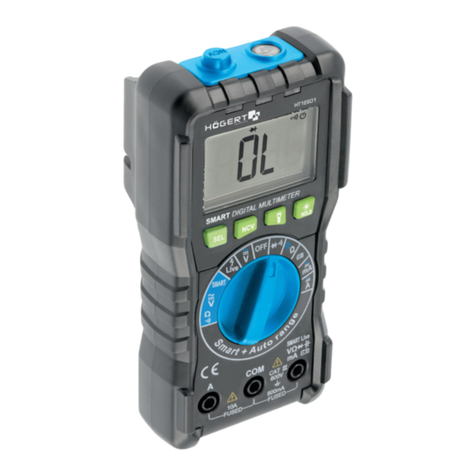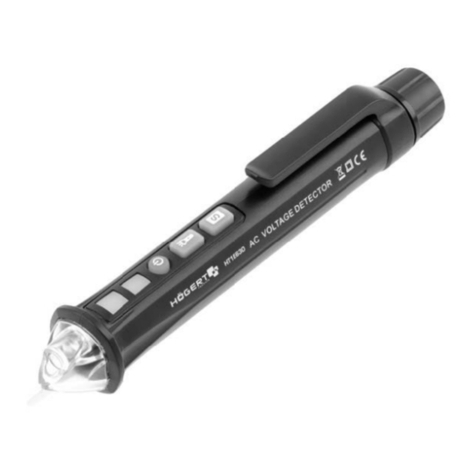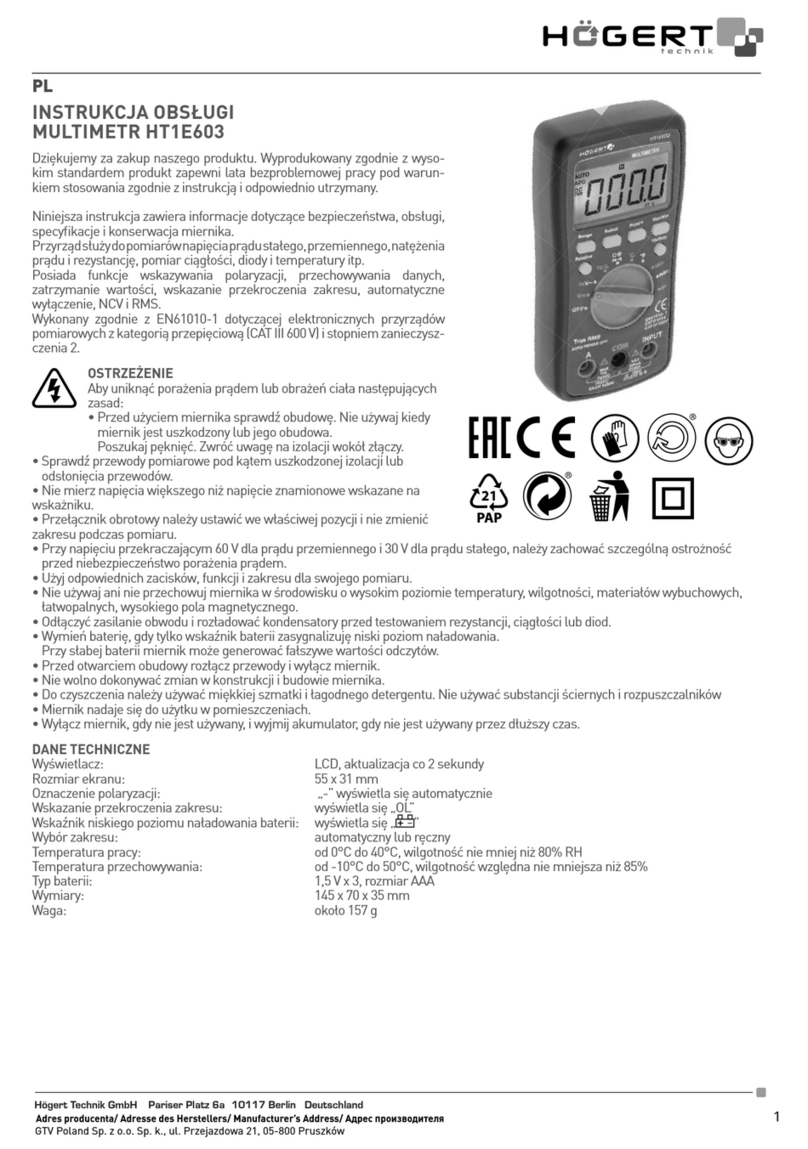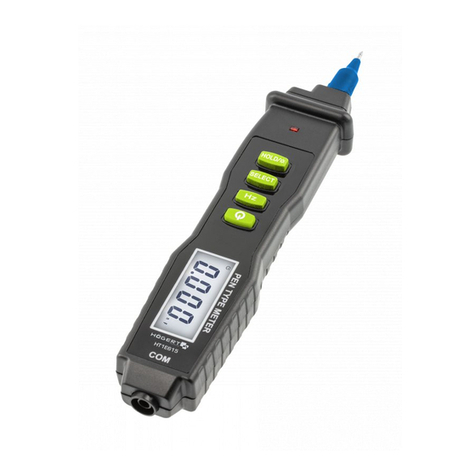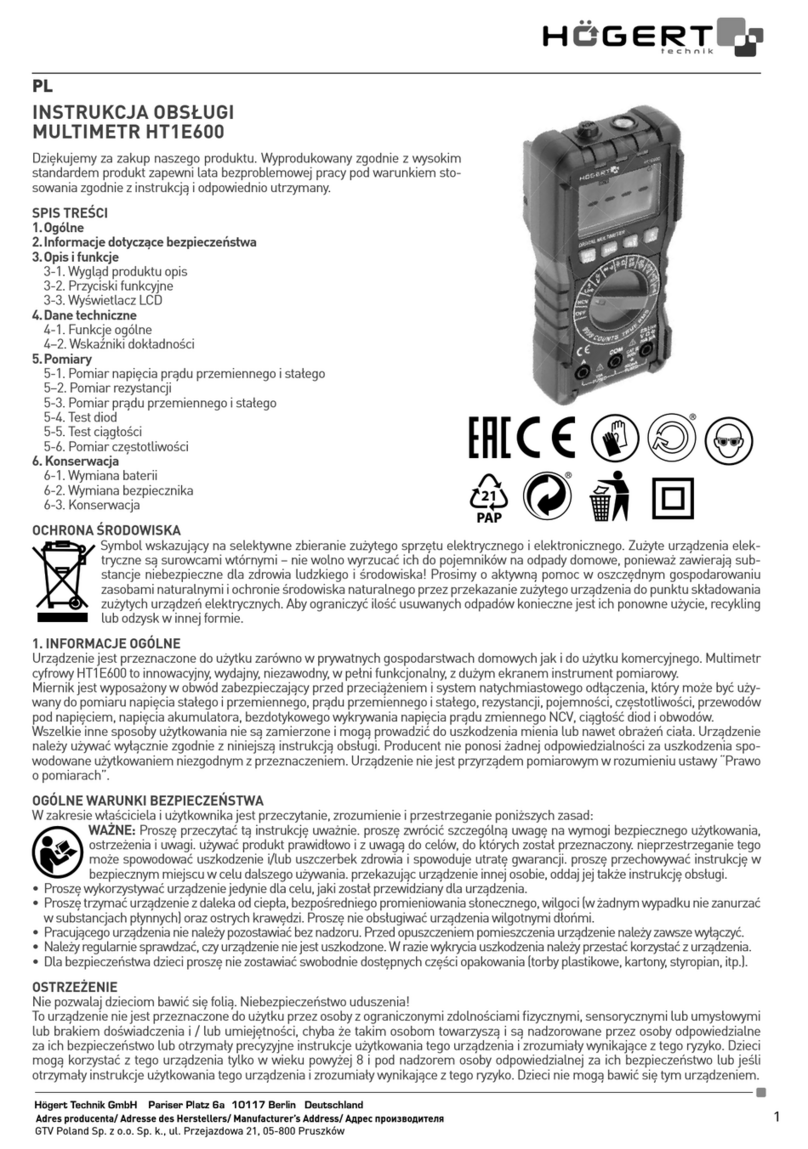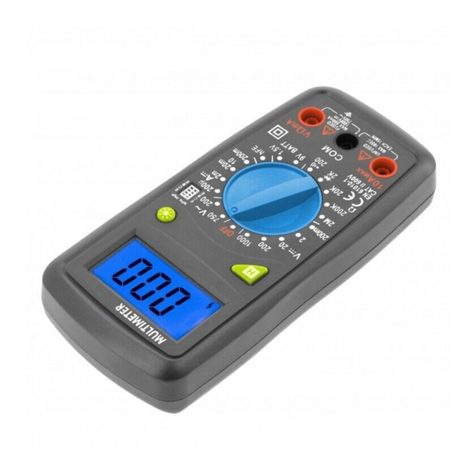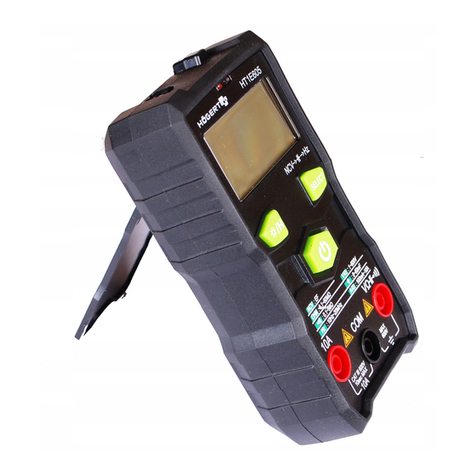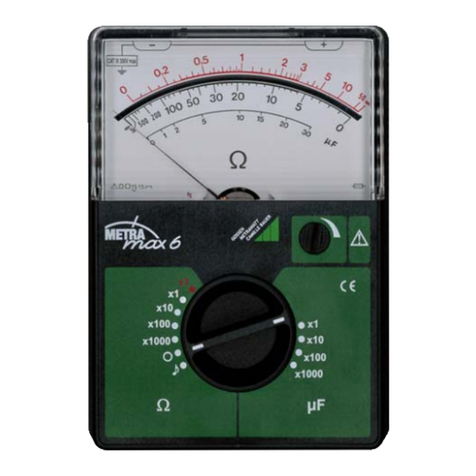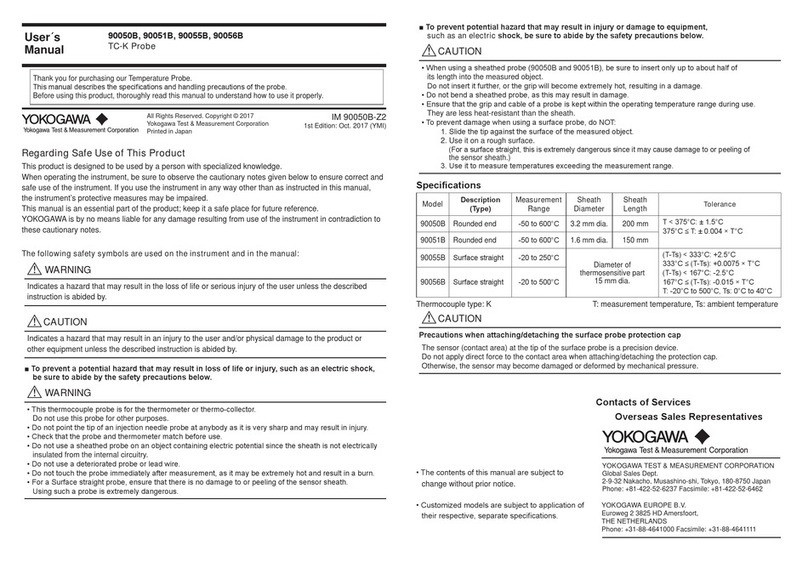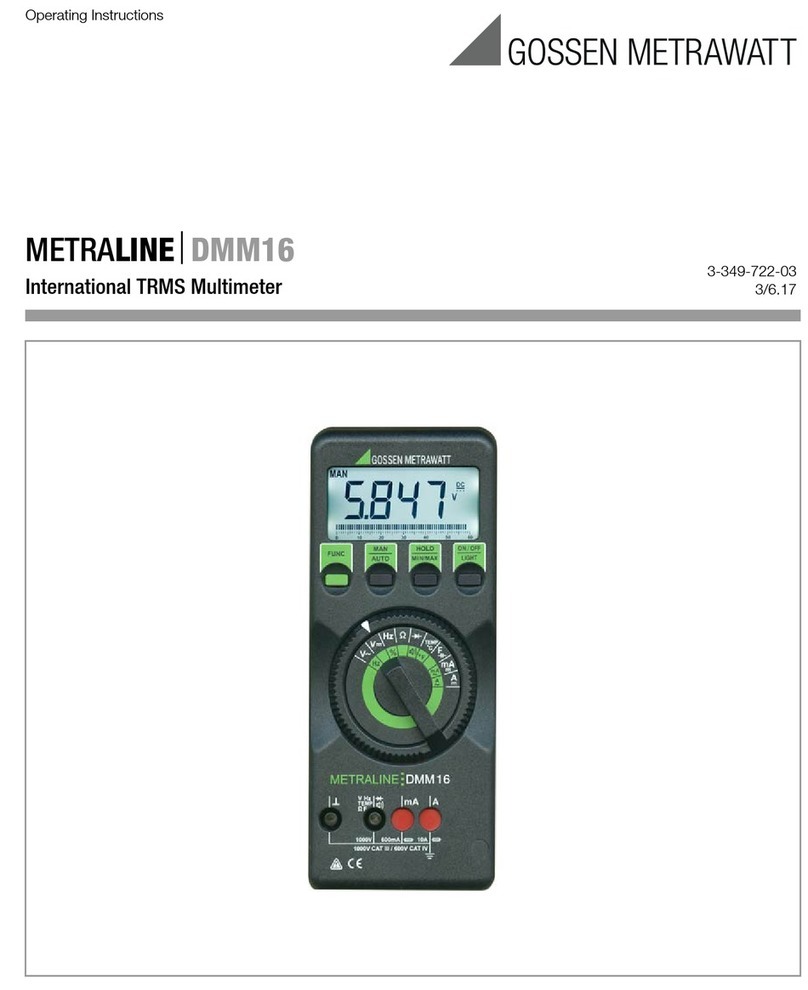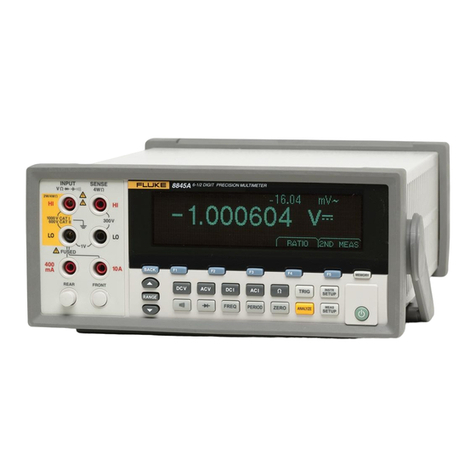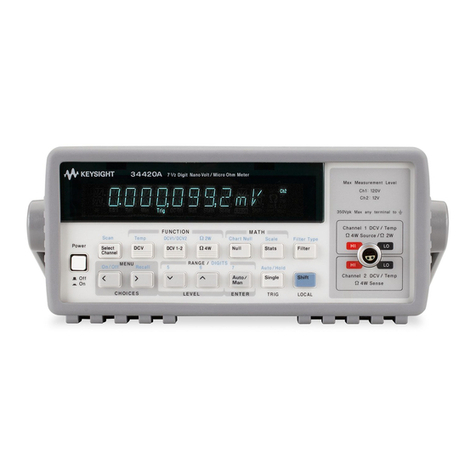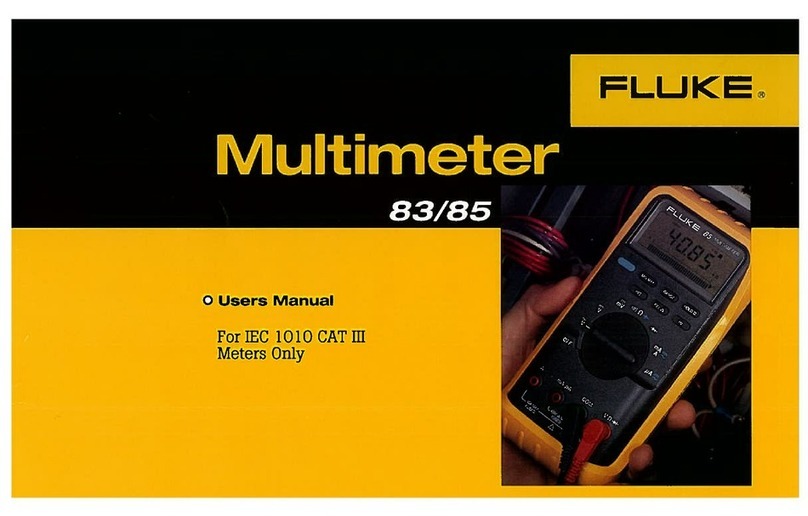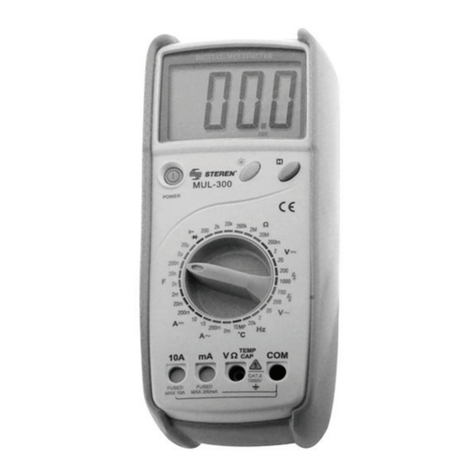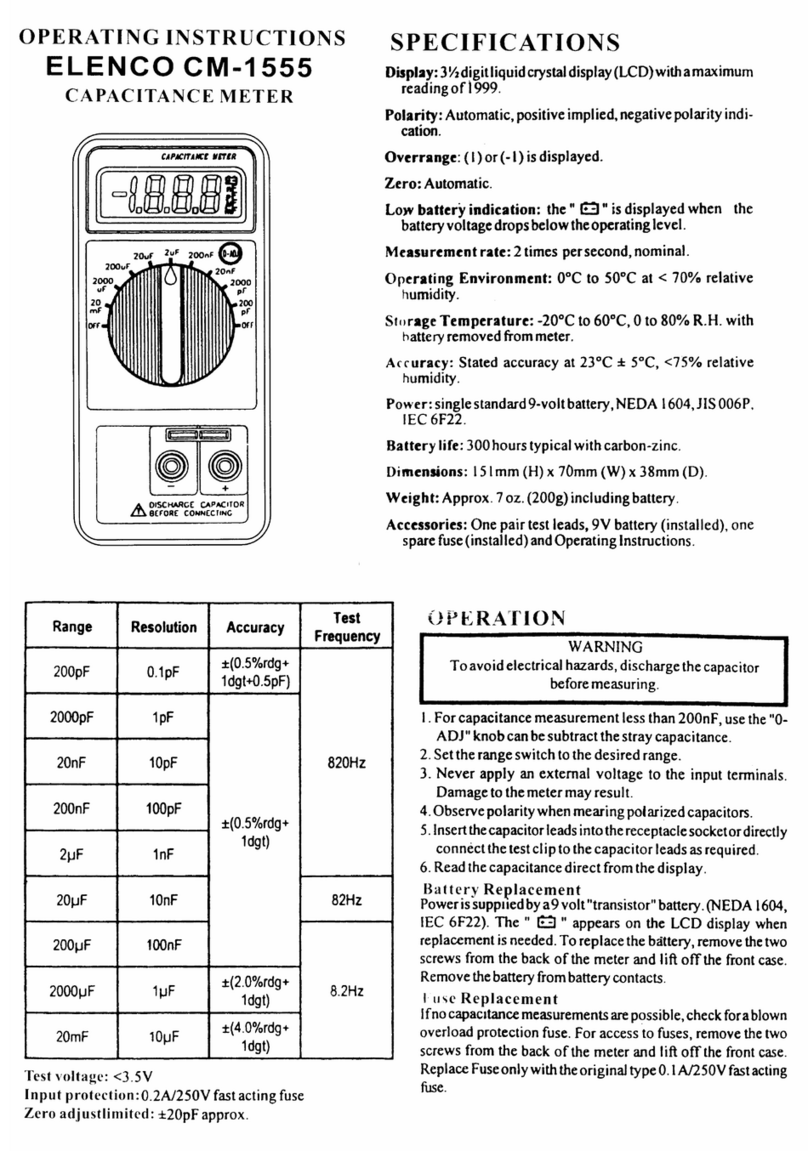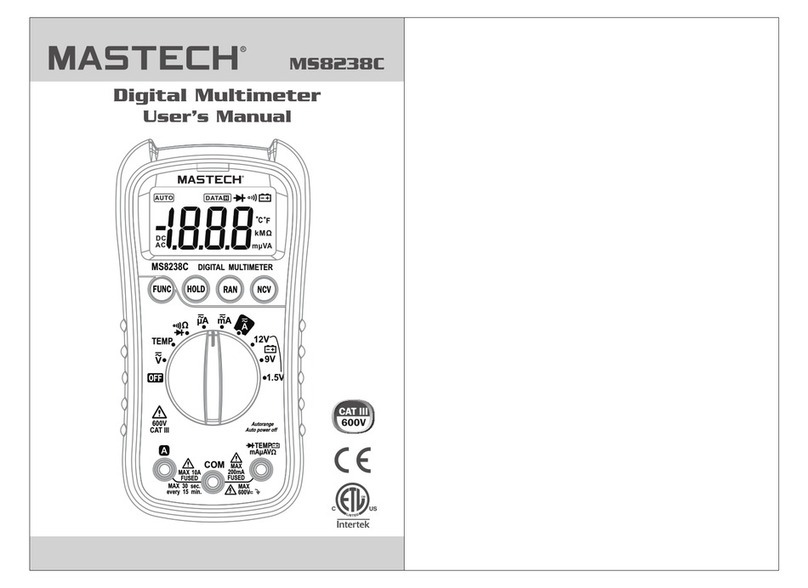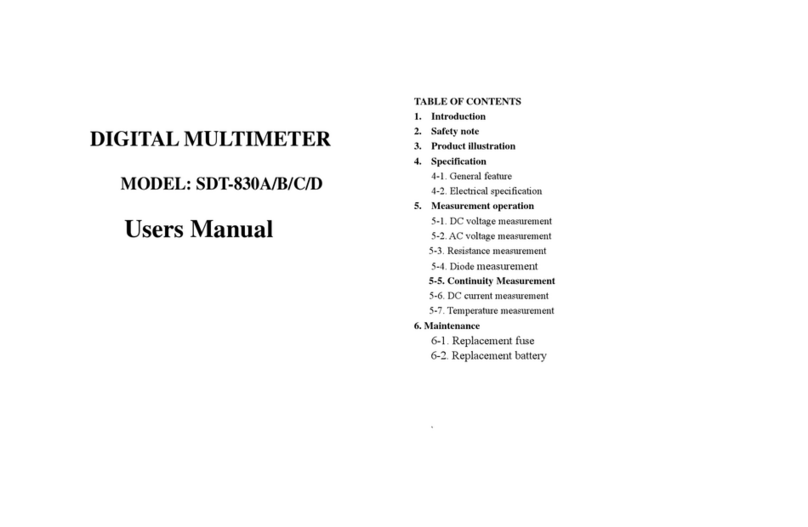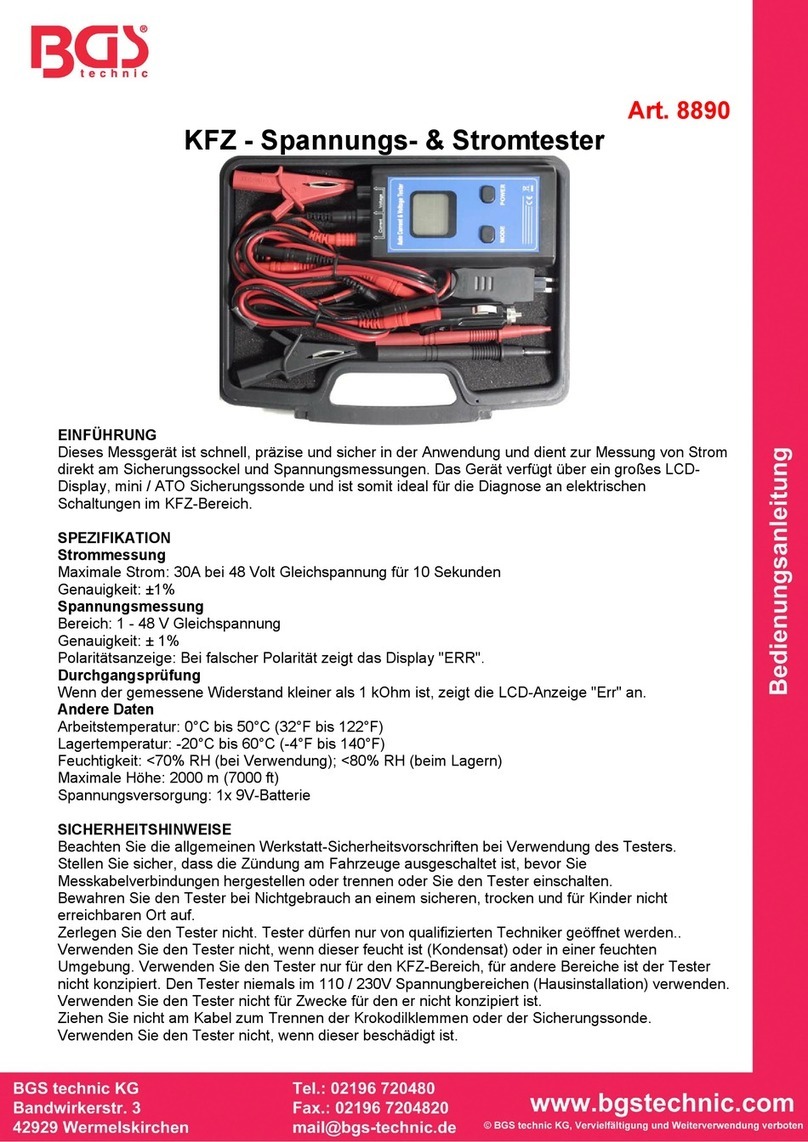
7
Adres producenta/ Adresse des Herstellers/ Manufacturer’s Address/ Адрес производителя
GTV Poland Sp. z o.o. Sp. k., ul. Przejazdowa 21, 05-800 Pruszków
6-3. Pomiar rezystancji
1) Podłącz czarny przewód pomiarowy do gniazda „COM”, a czerwony do gniazda „INPUT” (Uwaga: Biegunowość czerwonego
przewodu pomiarowego jest dodatnia „+”).
2) Ustaw przełącznik funkcji w pozycji „ ” zasięg
3) Wybierz zakres automatyczny lub ręczny za pomocą przycisku „RANGE”. Jeżeli mierzona wielkość rezystancji nie jest znana
wybierz najwyższy zakres.
4) Podłącz przewody pomiarowe do mierzonego obwodu.
5) Przeczytaj odczyt na wyświetlaczu.
Uwaga:
1. Dla pomiarów rezystancji > 1MΩ miernik może zająć kilka sekund, aby ustabilizować odczyt. Jest to normalne w przypadku
wysokiej rezystancji
2. Gdy wejście nie jest podłączone, tj. W obwodzie otwartym, symbol „OL” będzie wyświetlany jako wskaźnik przekroczenia zakresu.
3. Przed pomiarem rezystancji w obwodzie należy upewnić się, że testowany obwód został odłączony od zasilania i wszystkie kon-
densatory są całkowicie rozładowane.
6-4. Test ciągłości
1) Podłącz czarny przewód pomiarowy do gniazda „COM”, a czerwony do gniazdo „INPUT” (Uwaga: Biegunowość czerwonego
przewodu pomiarowego jest dodatnia „+”).
2) Ustaw przełącznik funkcji w pozycji „ ”
3) Naciśnij przycisk „SELECT”, aby wybrać tryb pomiaru ciągłości, i symbol „ ” pojawi się jako wskaźnik..
4)Podłącz przewody pomiarowe do mierzonego obwodu.
5)Jeśli oporność obwodu jest niższa niż około 30 Ω, wbudowany brzęczyk zostanie uruchomiony.
6-5. Test Diody
1) Podłącz czarny przewód pomiarowy do gniazda „COM”, a czerwony do gniazda „INPUT” (Uwaga: Biegunowość czerwonego
przewodu pomiarowego jest dodatnia „+”).
2) Ustaw przełącznik na funkcję „ ”.
3) Naciśnij przycisk „SELECT”, aby wybrać tryb pomiaru ciągłości, i wybierz symbol „ ” pojawi się jako wskaźnik.
4) Podłącz czerwony przewód pomiarowy do anody testowanej diody i czarny przewód pomiarowy do katody.
5) Miernik pokaże przybliżone napięcie przewodzenia diody. Gdy połączenia są odwrócone, na wyświetlaczu pojawi się „OL”.
6-6. Test tranzystora
1) Ustaw przełącznik funkcji w pozycji „hFE”.
2) Podłącz gniazdo wielofunkcyjne do gniazda „COM” i „INPUT”. Zobaczyć Rysunek 2, Nie odwracaj połączenia.
3) Sprawdź, czy tranzystor jest typu NPN czy PNP i zlokalizuj Emiter, Podstawa i kolektor. Włóż przewody tranzystora do testo-
wania w odpowiednie otwory w gnieździe testowym tranzystora adaptera.
4) Wyświetlacz LCD pokaże przybliżoną wartość hFE.
6-7 Pomiar temperatury
1) Ustaw przełącznik funkcji na zakres „ºC / ºF”.
2) Naciśnij przycisk „SELECT”, aby wybrać tryb „° C” lub „° F”. Symbol „° C” lub „° F” pojawi się jako wskaźnik.
3) Włóż czarną (lub „-”) wtyczkę termopary typu K do gniazda „COM”, a czerwona (lub „+”) wtyczka do gniazda „INPUT”.
4) Ostrożnie dotknij końcówkę termopary do obiektu, który ma być zmierzony.
5) Poczekaj chwilę, przeczytaj odczyt na wyświetlaczu.
6-8. Pomiar pojemności
1) Podłącz czarny przewód pomiarowy do gniazda „COM”, a czerwony do gniazdo „INPUT”.
2) Ustaw przełącznik funkcji w pozycji (UWAGA: biegunowość CZERWONY jest dodatni „+”)
3) Podłącz przewody pomiarowe do mierzonego kondensatora i upewnij się, że przestrzegana jest biegunowość połączenia.
Uwaga: kiedy mierzona pojemność jest większa niż 600 uF, potrzeba co najmniej 10 sekund, aby odczyt był stabilny. Kiedy jest
bardzo mała pojemność, do pomiaru wybierz gniazdo wielofunkcyjne, patrz RYSUNEK 3.
6-9. Pomiar częstotliwości
1) Ustaw przełącznik funkcji w wymaganej pozycji „Hz Duty”.
2) Podłącz czarny przewód pomiarowy do gniazda „COM”
3) czerwony do gniazda „INPUT” (uwaga: biegunowość czerwonego przewodu pomiarowego wynosi dodatnie „+”).
4) Przeczytaj odczyt na wyświetlaczu
Uwaga: Nie stosuj więcej niż 250 V RMS na wejściu. Wskazanie jest możliwe napięcie wyższe niż 100 V rms.
6-10 Bezkontaktowy test napięcia
1) Ustaw przełącznik funkcji w zakresie NCV
2) Naciśnij przycisk NCV i przytrzymaj
3) Jeśli w mierzonym obwodzie przepływa prąd zaświeci się lampka i uruchomi brzęczyk
Uwaga: Przed użyciem sprawdź działanie, testując działanie na obwodzie o znanych parametrach
6–11. Pomiar prądu (z cęgiem, opcjonalnie)
1) Jeśli chcesz zmierzyć prąd stały, musisz użyć cęgów DC.
2) Jeśli chcesz zmierzyć prąd przemienny, podłącz ujemny (-) przewód wyjściowy wybranego zacisku do do gniazda „COM”, podłącz
dodatni (+) przewód wyjściowy zacisku do gniazdo „INPUT”.
3) Ustaw przełącznik funkcji w pozycji „ ”
4) Zacisnąć obwód, który ma być zmierzony, za pomocą zacisku. Uwaga: tylko za każdym razem jeden kabel powinien być zaciśnię-
ty, a kabel powinien znajdować się na środku szczęki zaciskowej.
